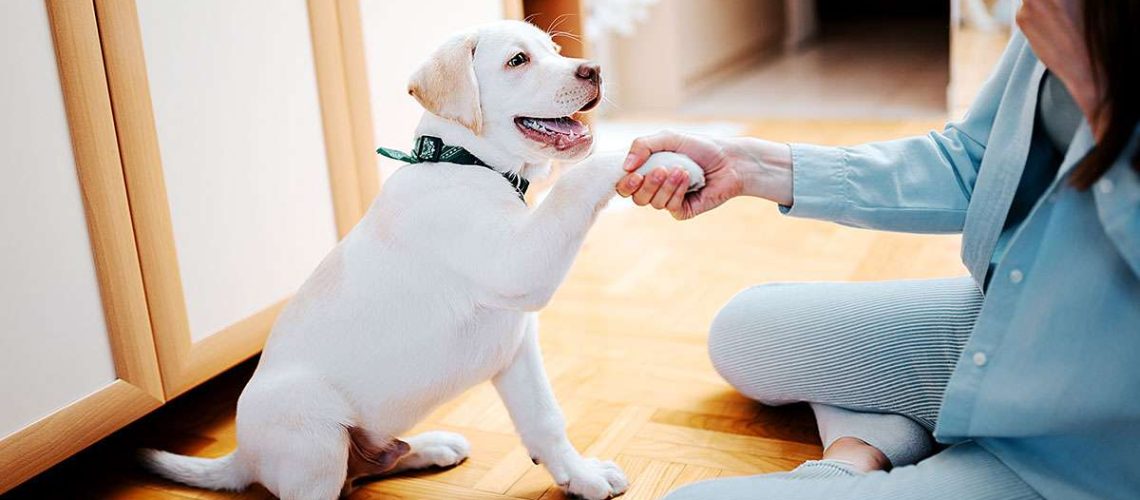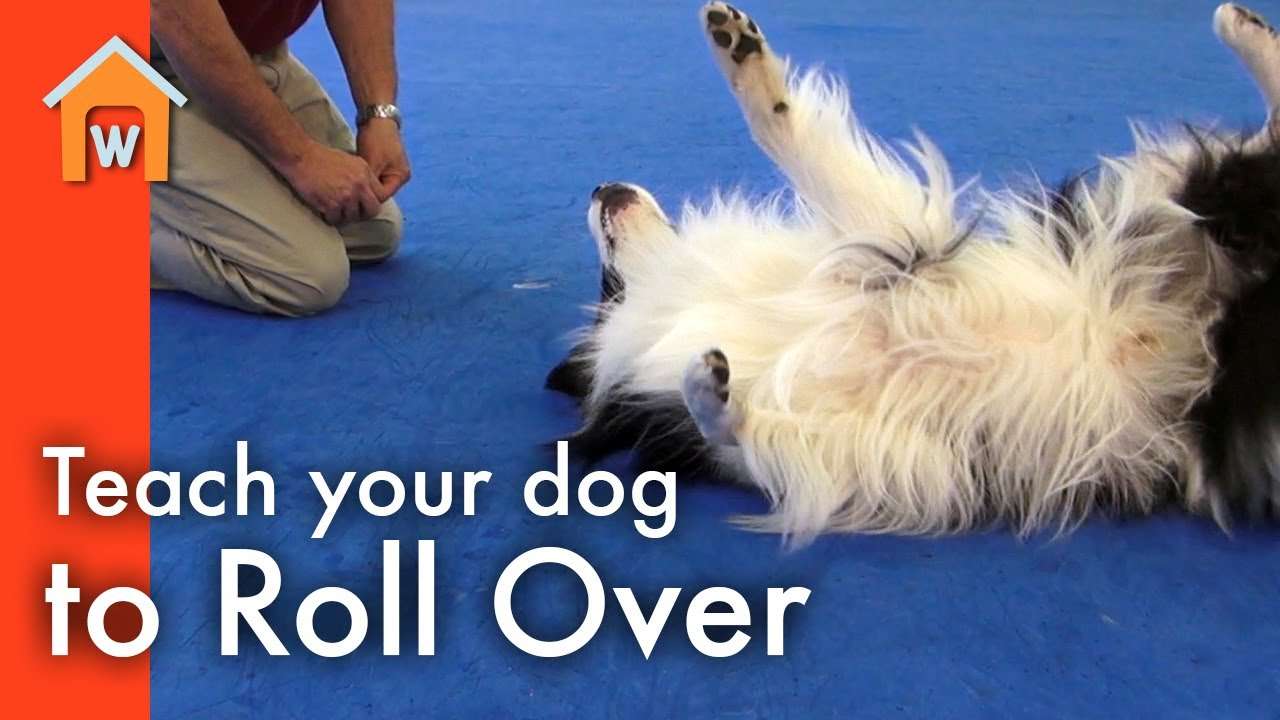Key Takeaways:
- Consistency is key: Establish a consistent routine and use the same commands for each trick to help your dog understand and learn more effectively.
- Positive reinforcement works best: Reward your dog with treats, praise, and affection when they successfully perform a new trick. This will motivate them to continue learning and improve their obedience.
- Break down tricks into smaller steps: Teach your dog one step at a time, gradually building up to the full trick. This makes it easier for them to understand and prevents frustration or confusion.
- Patience is crucial: Dogs learn at their own pace, so be patient and understanding. Avoid getting frustrated or punishing your dog if they don't grasp a trick immediately – instead, keep practicing and providing positive reinforcement.
- Keep training sessions short and fun: Dogs have short attention spans, so keep training sessions brief (around 10-15 minutes) and make them enjoyable. Use toys, playtime, and plenty of praise to make learning a fun experience for your furry friend.
Are you tired of your dog just sitting and staying? Do you wish your furry friend could do more than just fetch a ball? Well, get ready to unleash their full potential because today we're going to dive into the exciting world of teaching your dog new tricks. Whether you're a seasoned pet owner or a first-time dog parent, learning how to teach your dog new tricks can bring immense joy and numerous benefits to both you and your furry companion.
So, grab some treats and let's embark on this exciting journey together. Get ready to be amazed by what your four-legged friend can achieve!
Effective Methods for Teaching Your Dog New Tricks
Positive reinforcement
One of the most effective methods for teaching your dog new tricks is through positive reinforcement. This involves rewarding your dog with treats, praise, or playtime when they perform the desired behavior. By associating the trick with something enjoyable, your dog will be motivated to repeat the behavior in order to receive the reward. For example, if you are teaching your dog to sit, you can give them a treat every time they successfully sit on command.
Clicker training
Another effective method for teaching your dog new tricks is clicker training. This involves using a small device called a clicker to mark the exact moment your dog performs the desired behavior. The click sound acts as a signal to your dog that they have done something right and will be rewarded. Clicker training can be particularly useful for shaping more complex behaviors by breaking them down into smaller steps.
Using Positive Reinforcement to Train Your Dog
Rewards and treats
To effectively train your dog using positive reinforcement, it's important to choose rewards and treats that are highly motivating for them. This could be their favorite food treat or a special toy they love playing with. When your dog successfully performs the desired behavior, immediately give them the reward and praise them enthusiastically. This will create a positive association with the trick and reinforce their motivation to continue learning.
Consistency and timing
In order for positive reinforcement to be effective, it's crucial to be consistent in rewarding your dog for performing the desired behavior. Make sure to give the reward immediately after they have completed the trick so that they understand what they are being rewarded for. Consistency in both timing and criteria will help your dog understand what is expected of them and make the training process more efficient.
The Importance of Breaking Down Tricks into Smaller Steps for Teaching Your Dog
Step-by-step approach
When teaching your dog a new trick, breaking it down into smaller steps can make the learning process much easier for them to grasp. For example, if you are teaching your dog to roll over, you can break it down into steps such as "lie down," "turn head to the side," and "roll onto their back." By teaching each step separately and gradually combining them, your dog will be able to understand and perform the full trick more effectively.
Building on previous knowledge
Breaking tricks down into smaller steps also allows you to build upon your dog's existing knowledge. By starting with simple commands that they already know well, such as sit or stay, and gradually adding new elements, you can help your dog make connections between different behaviors. This not only makes the learning process smoother but also strengthens their overall understanding of obedience and training.
Overcoming Common Challenges in Training Your Dog
Persistence and patience
Training a dog can sometimes be challenging, but persistence and patience are key. Dogs learn at different paces, so it's important not to get discouraged if progress is slow. Consistent practice and positive reinforcement will eventually lead to success. It's also important to remember that dogs don't generalize well, so practicing in different environments with distractions can help reinforce their training.
Problem-solving techniques
If you encounter specific challenges during training, there are problem-solving techniques that can help overcome them. For example, if your dog is not responding to a particular command, you can try changing the reward or using a different cue. It's also important to consider any underlying reasons for the behavior, such as fear or anxiety, and address those issues appropriately. Seeking guidance from a professional dog trainer can also be beneficial in overcoming training challenges.
Easy Tricks for Beginners to Teach Their Dogs
Sit
The "sit" command is one of the easiest tricks to teach your dog. Hold a treat above their head and slowly move it back towards their tail while saying "sit." As your dog follows the treat with their eyes, their natural response will be to lower their rear end into a sitting position. Once they are fully seated, give them the treat and praise them enthusiastically.
Paw shake
The "paw shake" trick is another simple one to teach your dog. Start by getting your dog into a sitting position. Then, gently lift one of their paws and say "shake" while shaking their paw up and down. Immediately reward them with a treat and praise when they offer you their paw willingly. Repeat this process until your dog understands that offering their paw results in a reward.
The Time and Patience Needed to Teach a Dog a New Trick
Consistency in training sessions
Teaching a dog a new trick requires both time and patience. Consistency is key when it comes to training sessions. Set aside regular short sessions each day dedicated solely to training. This will help keep your dog focused and prevent them from becoming overwhelmed or bored.
Gradual progression
It's important to understand that dogs learn at different speeds, so be patient with your furry friend. Start with simple tricks before moving on to more complex ones, gradually increasing the difficulty level as your dog becomes more proficient. Celebrate small victories along the way, and remember that the journey of teaching your dog a new trick is just as rewarding as the end result.
Safety Precautions and Guidelines for Teaching Your Dog New Tricks
Physical limitations
When teaching your dog new tricks, it's important to consider their physical limitations. Some tricks may require more flexibility or strength than your dog possesses. Avoid pushing them beyond their capabilities to prevent any injuries or discomfort. Always prioritize their well-being and choose tricks that are suitable for their breed and size.
Positive reinforcement only
Stick to positive reinforcement training methods when teaching your dog new tricks. Avoid using punishment or negative reinforcement, as this can damage the trust between you and your furry companion. Positive reinforcement not only creates a stronger bond but also makes the learning experience enjoyable for both you and your dog.
In conclusion, teaching your dog new tricks can be a fun and rewarding experience. By using positive reinforcement, patience, and consistency, you can help your furry friend learn and perform amazing tricks that will impress everyone around.
How long does it take to teach a dog a new trick?
Keep in mind that training a dog requires dedication and consistency. It is possible to teach an older dog new behaviors, but it will not happen immediately. According to research, it can take up to four weeks for an older dog to learn new things, so being patient is extremely important.
What are the easiest dog tricks?
After you have learned the fundamental commands of dog training such as sit, down, come, and stay, you can progress to teaching your dog entertaining tricks. Teaching your dog to shake, roll over, spin, beg, or take a bow not only provides mental stimulation for the dog but also strengthens the bond between you and reinforces the basic commands.
How many tricks should I teach my dog a day?
When you allocate time for a training session, focus on teaching your dog one command. Short and intense lessons will facilitate learning, and concentrating on a single command or behavior will keep the dog attentive. While it is possible to train them on multiple commands in a day, it is advisable to stick to one command per session.
What is a trick you shouldn't teach your dog?
Although a dog sitting or lying down on command may not be an issue in most situations, certain more complex tricks such as jumping, spinning, giving high fives, or engaging in physical contact like hugs and kisses, can pose problems for both you and your dog.
What is the most common trick a dog does?
Teaching your dog to "sit" is a basic trick that all pet owners should prioritize. This command serves as the foundation for many other dog tricks, making it essential for their overall training. Once your dog has mastered the "sit" command, they will find it easier to learn other tricks.
In what order should I teach my dog commands?
Ray suggests that the essential commands that every dog should be taught (in this sequence) include heel, sit, stay, and come. To begin, position the dog at your left side, with the leash in your hand and the dog at knee level. As you give the command "Heel," using the dog's name, start walking and lead with your left foot.

















